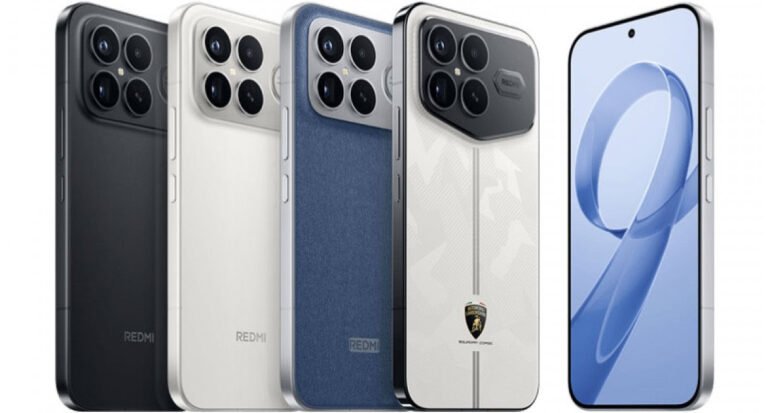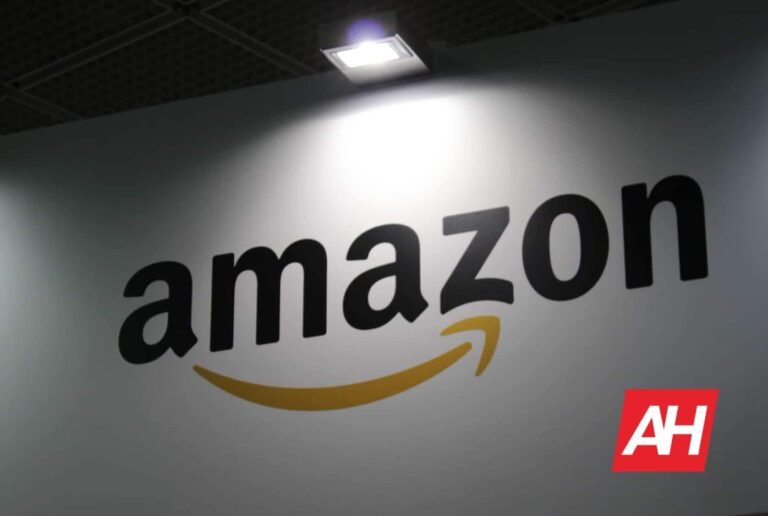![]()
Both Apple and Google released very compelling compact flagship smartphones this year. In this article, we’ll compare those two devices. This is a comparison between the Apple iPhone 17 Pro vs Google Pixel 10 Pro. There are several design similarities between the two phones, but for the most part, they’re very different, in basically every way. That is especially true when we look under the hood.
As per usual, we’ll first list the specs of both smartphones, following which we’ll compare them across a number of categories. We’ll be comparing their designs, displays, performance, battery life, cameras, and audio output. There is a lot to talk about here, so, let’s get started, shall we?
Specs

Apple iPhone 17 Pro
Google Pixel 10 Pro
| Apple iPhone 17 Pro | Google Pixel 10 Pro | |
|---|---|---|
| Dimensions | 150 x 71.9 x 8.8 mm | 152.8 x 72 x 8.6mm |
| Weight | 206 grams | 207 grams |
| Display | 6.3-inch LTPO Super Retina XDR OLED | 6.3-inch Super Actual LTPO OLED display |
| Refresh rate | 1-120Hz | Smooth Display (1-120Hz) |
| Resolution | 2622 x 1206 | 2856 x 1280 |
| Chipset | Apple A19 Pro | Google Tensor G5 |
| RAM | 12GB | 16GB (LPDDR5X) |
| Storage | 256GB/512GB/1TB | 128GB/256GB/512GB/1TB (UFS 4.0) |
| Main camera | 48MP (1/1.28 aperture, 1.22um pixel size, sensor-shift OIS, dual pixel PDAF) | 50MP (f/1.68 aperture, 1/1.3-inch sensor size, 82-degree FoV) |
| Ultra-wide camera | 48MP (f/2.2 aperture, 1/2.55-inch sensor size, 120-degree FoV, 0.7um pixel size, PDAF) | 48MP (f/1.7 aperture, 1/2.55-inch sensor size, 123-degree FoV) |
| Telephoto camera | N/A | N/A |
| Periscope camera | 48MP (f/2.8 aperture, 1/2.55-inch sensor size, PDAF, 3D sensor-shift OIS, 4x optical zoom) | 48MP (f/2.8 aperture, 1/2.55-inch sensor size, 5x optical zoom, 22-degree FoV) |
| Selfie camera(s) | 18MP (f/1.9 aperture, OIS) | 42MP (f/2.2 aperture, 103-degree FoV) |
| Battery size | 3,988mAh (nano SIM) / 4,252mAh (eSIM only) | 4.870mAh |
| Charging | Wired, 25W MagSafe wireless, 4.5W reverse wired (charger not included) | 30W wired, 15W Qi2 wireless (charger not included) |
| Colors | Silver, Cosmic Orange, Deep Blue | Moonstone, Jade, Porcelain, Obsidian |
Apple iPhone 17 Pro vs Google Pixel 10 Pro: Design
If you look at the two phones from the front, they are somewhat similar, though still different. Both of them have flat displays with similar corner curvature. The bezels around both displays are thin and uniform, even though they’re thinner on the Apple iPhone 17 Pro. What is different are the camera cutouts. The iPhone 17 Pro has a pill-shaped cutout, the so-called Dynamic Island. The Google Pixel 10 Pro has a regular display camera hole up there.
The frame is flat on both devices, even though it does curve a bit towards the edges. The iPhone 17 Pro has a power/lock key on the right, along with the Camera control key. On the left, you’ll find the volume up and down keys, along with the Action key. The Pixel 10 Pro, on the flip side, has a power/lock button on the right side, along with the volume up and down keys. The power/lock key actually sits above the volume rocker keys on the Pixel 10 Pro.
If we flip them around, you’ll see camera bars on both phones, but they’re quite different. The one on the iPhone 17 Pro is larger, but the one on the Pixel 10 Pro will look better to most people. Both smartphones have three cameras on the back. The iPhone 17 Pro also has a separate glass section on the back, as a design element. The backplate are flat on both smartphones, for the most part.
Both of these phones are made out of aluminum and glass. Both of them are IP68 certified for water and dust resistance, and both of them are quite slippery.
Apple iPhone 17 Pro vs Google Pixel 10 Pro: Display
A 6.3-inch LTPO Super Retina XDR OLED display is included on the iPhone 17 Pro. That panel has an adaptive refresh rate (1-120Hz). HDR10 is supported, as is Dolby Vision. The peak brightness on this panel is 3,000 nits. The screen-to-body ratio here is around 89%, while the display aspect ratio is 19.5:9. The resolution you’re getting here is 2622 x 1206 pixels. The Ceramic Shield 2 protects this panel. This panel also comes with an anti-reflective coating.

The Google Pixel 10 Pro, on the flip side, has a 6.3-inch LTPO OLED display. That display is flat too, while it supports an adaptive refresh rate (1-120Hz). HDR10+ content is supported here, while the peak brightness is 3,300 nits. The screen-to-body ratio here is around 87%, while the display aspect ratio is 20:9. The resolution this panel offers is 2856 x 1280 pixels, while the Gorilla Glass Victus 2 protects the display.
Both of these displays are great, actually. They’re both very sharp and vivid, while the viewing angles are also very good. The touch response is good, too, and both displays offer those inky blacks that people seem to love so much. Both displays are also well-protected. The Pixel 10 Pro can, technically, get a bit brighter, but the iPhone 17 Pro’s panel comes with an anti-reflective coating, which does make a slight difference in glare.
Apple iPhone 17 Pro vs Google Pixel 10 Pro: Performance
The Apple iPhone 17 Pro is fueled by the Apple A19 Pro processor. That is a 3nm chip, and it comes backed by 12GB of RAM and NVMe flash storage. That is the most powerful chip Apple has to offer at the moment. The Google Pixel 10 Pro is fueled by the Google Tensor G5 processor, which is a 3nm chip. That processor is backed by 16GB of LPDDR5X RAM and UFS 4.0 flash storage. The storage is not expandable on either phone.
Both of these smartphones offer great performance, actually. The Apple A19 Pro is a notably more powerful chip, but that’s not something you’ll notice in day-to-day use. Yes, you may notice it during gaming, as the iPhone 17 Pro is the better choice for gaming, but only if you’re playing truly intensive games. Otherwise, it really doesn’t matter, both of them can handle a considerable workload, and neither phone has issues with overheating or anything like that.
They’re both very snappy during day-to-day use, and chances are it’ll stay that way for quite some time. Google did get a boost with the Tensor G5 as it’s made by TSMC, and it’s a solid chip, even though it’s nowhere near as powerful as the Apple A19 Pro. It is well-optimized for the Pixel phones, as it’s fueling those phones exclusively.
Apple iPhone 17 Pro vs Google Pixel 10 Pro: Battery
The iPhone 17 Pro comes in two battery variants, actually. The eSIM model, which is available in the US, amongst other countries, includes a 4,252mAh battery. The nano SIM model comes with a 3,998mAh battery. The Pixel 10 Pro, on the other hand, includes a 4,870mAh battery on the inside. Yes, it does have a bigger battery, but Android phone usually have larger batteries than their iPhone counterparts. Those battery packs are actually quite large for an iPhone of that size.
Speaking of which, the iPhone 17 Pro does offer notably better battery life in comparison. Don’t get us wrong, the Pixel 10 Pro offers good battery life, but nowhere near as good as the iPhone 17 Pro. With Apple’s handset, you really don’t have to worry if you’ll have enough juice until the end of the day. It can handle quite demanding use, and still keep more than enough charge. The Pixel 10 Pro will be more than enough for most people, but if you’re a power user, it may not be enough. Still, the battery life is quite good.
The iPhone 17 Pro’s wired charging peaks at 35W, but it did not keep that speed at all times. The phone also supports 25W wireless MagSafe charging and 4.5W reverse wired charging. The Pixel 10 Pro supports 30W wired, 15W Qi2 wireless, and 5W reverse wired charging. The iPhone 17 Pro can be fully charged in around an hour and 20 minutes, while it will take the Pixel 10 Pro around 20 minutes more. Do note that neither phone comes with a charger in the box, though.
Apple iPhone 17 Pro vs Google Pixel 10 Pro: Cameras
The iPhone 17 Pro includes three cameras on the back. A 48-megapixel main camera (1/1.28-inch sensor size) is backed by a 48-megapixel ultrawide unit (1/2.55-inch sensor size, 120-degree FoV), and a 48-megapixel periscope telephoto camera (1/2.55-inch sensor size, 4x optical zoom).

The Google Pixel 10 Pro, on the flip side, includes three cameras as well, but different ones entirely. It has a 50-megapixel main camera (1/1.31-inch sensor size), along with a 48-megapixel ultrawide unit (1/2.55-inch sensor size, 123-degree FoV). The third camera on the back is a 48-megapixel periscope telephoto unit (1/2.55-inch sensor size, 5x optical zoom).
Both of these smartphones do deliver really good images, though the iPhone 17 Pro has the upper hand this time around. Its images are offering better balance, and are usually closer to what you see in real life. The Pixel 10 Pro shots are usually more contrasty, but at times they’re too dark for some reason. Google needs to further balance out the Pixel 10 Pro camera with updates. The video recording is also better on the iPhone 17 Pro, at least from what we’ve seen.
Audio
Both of these phones do offer stereo speakers. The ones on the Pixel 10 Pro are notably louder, though. The sound quality is good from both smartphones, but when you pit them against each other, the loudness difference is noticeable… easily.
There is no audio jack on either phone, but you can use their Type-C ports for the same purpose. Both smartphones support Bluetooth 6.0, in case you prefer wireless audio over the wired option.
The post Phone Comparisons: Apple iPhone 17 Pro vs Google Pixel 10 Pro appeared first on Android Headlines.


